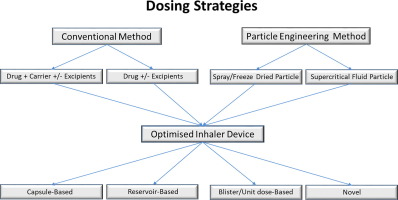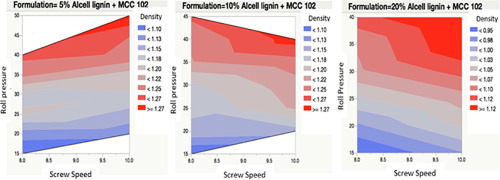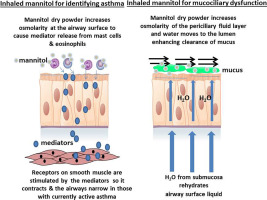- Home
- Blog
- News
- Basics
- Sources
- Agencies, Regulatory & Organisations
- CERSI Excipients Browser
- Excipient Report
- Excipient DMF List
- EXCiPACT Certified Companies
- Excipient Documentation
- Excipient EINECS Numbers
- Excipient E-Numbers
- FDA Inactive Ingredient List
- FDA GRAS Substances (SCOGS) Database
- IPEC Americas
- USP - U.S. Pharmacopeia
- Definitions
- Whitepapers / Publications
- Supplier
- Services
- Media
- Events
- 1st pharmaexcipients Poster Award
- Event Calendar
- Events featured by pharma-excipients
- 4th Annual Formulation & Drug Delivery Congress
- DDF Summit
- ExcipientFest Americas
- ExcipientFest Asia
- Global CompliancePanel
- International Conference and Exhibition on Pharmaceutics & Novel Drug Delivery Systems
- Formulation & Drug Delivery USA Congress
- Laboratory Medicine 2018
- Making Pharmaceuticals Europe
- Making Pharmaceuticals Exhibition
- Pharma Integrates
- PharmaExcipients China @CPhI China
- TTC Technology Training Center
- Jobs
- Online Sourcing
- Contact
17. September 2018
The growing interest on polymeric delivery systems for pulmonary administration of drugs anticipates a more direct and efficient treatment of diseases such as tuberculosis (TB) that uses the pulmonary route as the natural route of infection. Polymeric microparticles or nano-in-microparticles offer target delivery of drugs to the lungs and the potential to control and sustain drug release within TB infected macrophages improving the efficiency of the anti-TB treatment and reducing side effects....
26. August 2018
The aim of this study was to develop roflumilast dry powder inhaler (DPI) formulations by spray drying using hydroxypropyl-β-cyclodextrin (HPβCD) and to determine their suitability for pulmonary delivery. Different feed solution concentrations, solvent systems and spray drying parameters were used to obtain the formulations which were characterized using X-ray powder diffraction, thermal analysis, scanning electron microscopy, particle size distribution, bulk and tapped density, specific...
30. July 2018
The number of biologics in the therapeutic development pipeline is increasing including those delivered though inhalation (Morales, 2017; Fathe, 2016). Biologics comprise a broad variety of complex macromolecules with unique physicochemical characteristics. These distinctive characteristics control their pharmacological mechanisms of action, stability, and ultimately affect their processing, formulation, and delivery requirements. This review systematically covers crucial aspects of biologic...
07. July 2018
The pulmonary route of administration has been commonly used for local lung conditions such as asthma and chronic obstructive pulmonary disease (COPD). Recently, with the advent of new technologies available for both formulation and device design, molecules usually delivered at high doses, such as antibiotics and insulin to treat cystic fibrosis (CF) and diabetes, respectively, can now be delivered by inhalation as a dry powder. These molecules are generally delivered in milligrams instead of...
07. July 2018
In this study, a process map was developed in an effort to improve the understanding of dry granulation of pharmaceutical excipients by roll compaction process, and to implement the quality-by-design (QbD) approach. Through development of the process map, a correlation was made between the critical process parameters (roll pressure, screw speed), and critical quality attributes (density of ribbons and granule size). This method reduces development time, quantity of materials required and cost....
20. May 2018
The influence of particle morphology and size of alpha-lactose monohydrate on dry granules and tablets was studied. Four different morphologies were investigated: Two grades of primary crystals, which differed in their particle size and structure (compact crystals vs. agglomerates). The materials were roll compacted at different specific compaction forces and changes in the particle size distribution and the specific surface area were measured. Afterwards two fractions of granules were pressed...
15. April 2018
This study was performed to investigate how increasing the active pharmaceutical ingredient (API) content within a formulation affects the dispersion of particles and the aerosol performance efficiency of a carrier based dry powder inhalable (DPI) formulation, using a custom dry powder inhaler (DPI) development rig. Methods Five formulations with varying concentrations of API beclomethasone dipropionate (BDP) between 1% and 30% (w/w) were formulated as a multi-component carrier system...
14. April 2018
The story of how we came to use inhaled mannitol to diagnose asthma and to treat cystic fibrosis began when we were looking for a surrogate for exercise as a stimulus to identify asthma. We had proposed that exercise-induced asthma was caused by an increase in osmolarity of the periciliary fluid. We found hypertonic saline to be a surrogate for exercise but an ultrasonic nebuliser was required. We produced a dry powder of sodium chloride but it proved unstable. We developed a spray dried...
07. April 2018
It has been shown that dry coating cohesive active pharmaceutical ingredients (APIs) with nano-silica can improve packing and flow of their blends, facilitating high speed direct compressiontableting. This paper examines the broader scope and generality of previous work by examining three fine APIs; micronized Acetaminophen (mAPAP), coarse Acetaminophen (cAPAP) and micronized Ibuprofen(mIBU), and considers dry coating with both hydrophobic or hydrophilic nano-silica to examine the effect not...
27. March 2018
Particle surface modification is becoming a vital strategy in the pharmaceutical industry for “difficult to formulate” APIs. Most surface modification techniques, however, alter innate particle properties either chemically or physically. These surface modification technologies involve the use of elevated temperatures, high pressures, and/or solvents, making these processes highly unsuitable for unstable APIs that are degraded when exposed to such conditions. Aston Particle Technologies...










